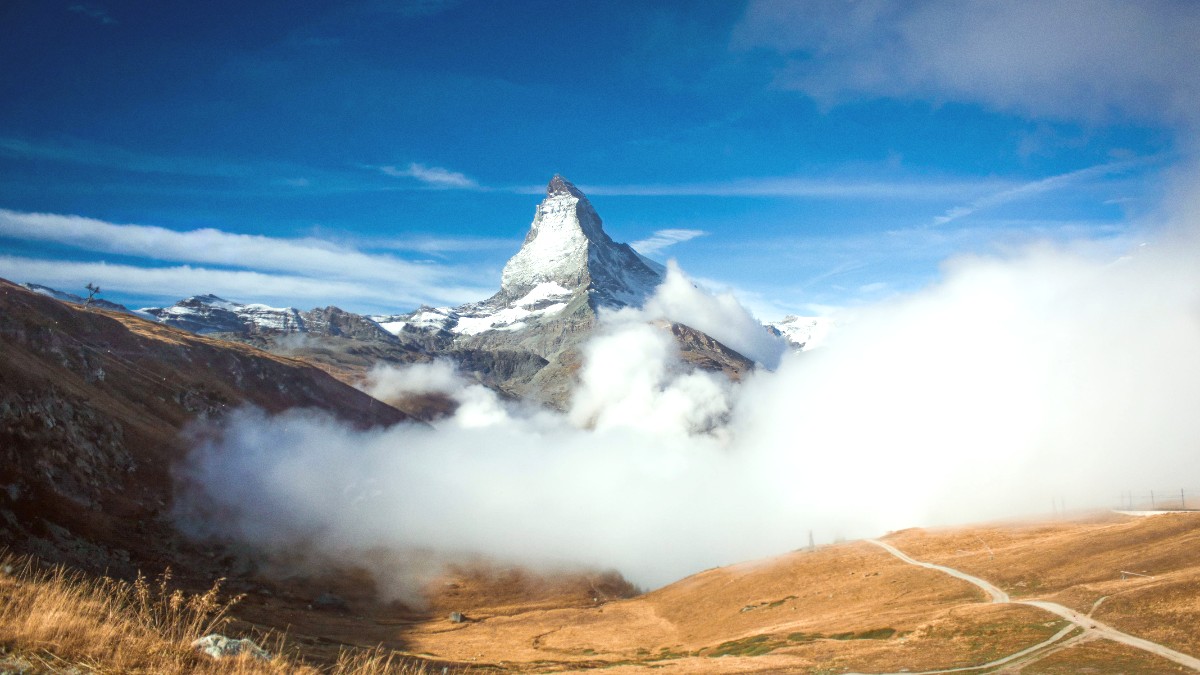
Valais, Switzerland
Valaisan cuisine historically used ingredients from mountain farming: cheese, potatoes, dried meats, and rye bread. Dishes needed a hearty nature to sustain farmers and mountaineers.
Over time, Zermatt's international clientele fostered a diverse dining scene. Traditional Swiss dishes coexist with global flavors. The village maintains many family-run restaurants that honor these local traditions.
Gruyère, Fribourg Vacherin, and Raclette cheese contribute to many dishes. Local alpine cheeses from Valais also stand out.
Potatoes form a staple, often as Rösti or in cheesy dishes. Valaisan dried beef (Walliser Trockenfleisch), raw ham, and bacon are regional specialties, often thinly sliced.
A dark, dense, traditional bread common in Valais. The Valais region holds Switzerland's largest wine production, known for its Fendant (white) and Dôle (red) wines. Flavors possess a rich and savory profile.
Melted cheese (Gruyère and Fribourg Vacherin blend) with white wine, garlic, and kirsch. Dip bread cubes. Find it at traditional restaurants like Whymper Stube or Du Pont.
A national dish, perfect for sharing.
A Valaisan specialty. A half-wheel of Raclette cheese slowly melts, scraped onto your plate. Served with small boiled potatoes, pickled gherkins, and onions. Many restaurants offer this, including Du Pont and Stadel.
An interactive and savory experience.
An appetizer or light meal featuring an assortment of thinly sliced dried meats: Valaisan dried beef, raw ham, and bacon. Often served with local alpine cheese and dense Valaisan rye bread. Find it at many traditional restaurants and alpine huts.
A regional classic for meat lovers.
The Valais region is Switzerland's largest wine-growing area. Try local white wines like Fendant (Chasselas grapes) and red wines like Dôle (Pinot Noir and Gamay blend).
Kirsch (cherry brandy) and Williams (pear brandy) are popular fruit brandies, often digestifs. Rivella, a Swiss soft drink from milk whey, is a national favorite. Excellent local tap water is always free.
Zermatt boasts several high-end restaurants, many with Michelin stars or Gault&Millau points. Reservations are essential, especially during peak season.
This category balances quality, ambiance, and price. Options for traditional Swiss dishes and varied menus.
For budget-conscious options, supermarkets and bakeries are . Zermatt also presents various international cuisine.
Seek out "Menu du Jour" or "Tagesmenu" specials at lunchtime in mid-range restaurants.
These often present a good value set meal.
Supermarkets like Coop and Migros serve as the main sources for fresh produce and prepared foods.
This is helpful for those with kitchen access in their lodging.
Zermatt does not have large food halls. Local bakeries, butchers, and supermarkets are the main fresh food sources.
Specialty shops cater to specific food needs, like local cheeses and meats.
Fresh bread is available daily from local bakeries.
Dining focuses on restaurants, from casual to fine dining.
Use translation apps (e.g., Google Translate) to communicate dietary needs clearly. For severe allergies, print a card in German and French stating your allergens.
This avoids miscommunication.
Review restaurant menus online. The HappyCow app and website locate vegetarian and vegan restaurants. Supermarkets like Coop and Migros stock gluten-free, lactose-free, and organic products.
These aid meal planning.
Many traditional dishes have adaptations. Rösti, a potato dish, can be vegetarian. Älplermagronen can be made without meat. Some restaurants list vegetarian options clearly.
Mountain huts typically offer simpler menus. Confirm dietary needs in advance if you plan to dine at a hut, as their options are more limited.
Formal cooking classes focusing on local Zermatt or Valaisan cuisine remain limited for tourists. Some hotels present private cooking demonstrations.
Direct farm visits in Zermatt are rare due to the steep terrain. Opportunities for visiting cheese dairies or vineyards exist in the wider Valais region.
While mainly a music festival, Zermatt Unplugged (April) includes various food stalls and pop-up restaurants. Local village festivals also feature traditional food and drink.
Reservations are for popular restaurants, especially during peak season, both in the village and in mountain hamlets like Findeln.
Booking ahead secures your spot.
Many mountain restaurants have ski-in/ski-out access or require a hike. Plan your route accordingly for a smooth visit.
Combine dining with outdoor activity.
Plan at least one meal at a mountain restaurant like Chez Vrony. The combination of food, atmosphere, and views creates a memorable experience.
Be aware of specific meal times, especially for lunch and dinner, as some kitchens close between services or have last order times. Early dinner bookings are common.
For budget savings, utilize supermarkets (Coop, Migros) for snacks, drinks, or ingredients if your accommodation has kitchen facilities. They offer a good variety of ready-to-eat items.
Local cuisine has a hearty, savory character, with cheese and dried meats forming components. Valaisan wines pair well with these dishes.